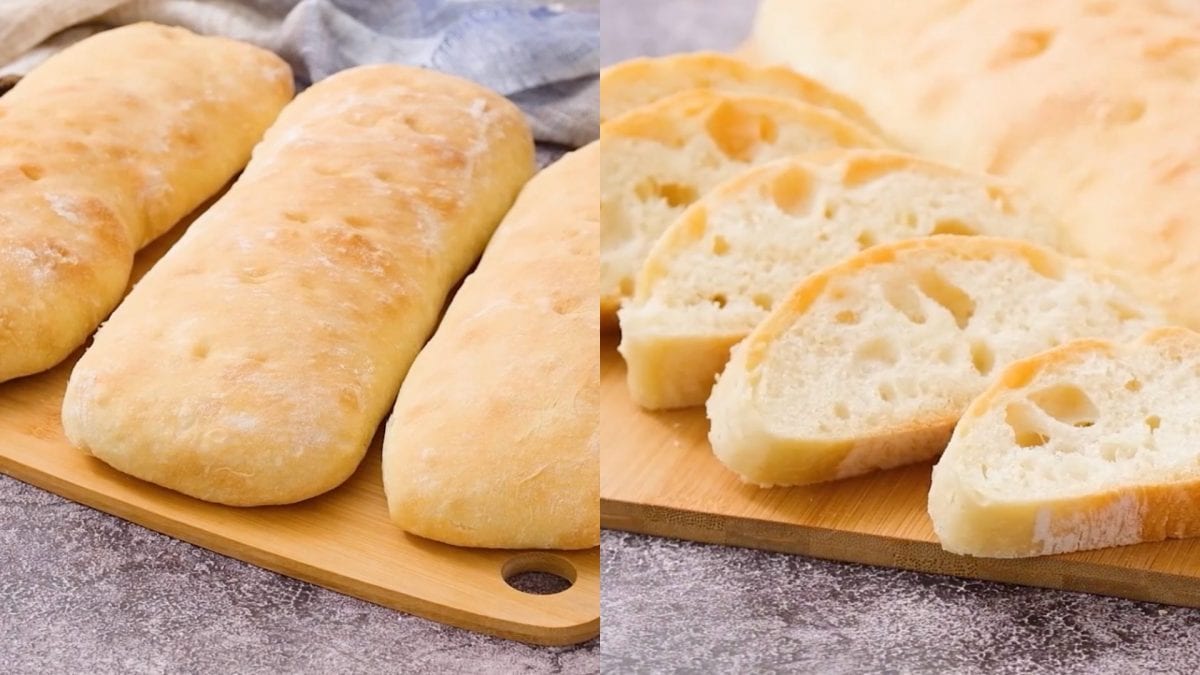
Meet the loaf that makes every sandwich instantly gourmet, the ciabatta. With its golden crust and just the right chew, this Italian classic is the secret to elevating everything from a simple panini to a saucy meatball sub. The beauty is you don’t need a bakery oven or years of bread-making wisdom to pull it off.
In a few easy steps, you’ll be slicing into a warm, homemade ciabatta that’s perfect for soaking up olive oil, hugging fresh mozzarella, or disappearing straight from the cooling rack.
What is Ciabatta Bread?
Ciabatta, meaning “slipper” in Italian because its shape resembles one, was created in 1982 by baker Arnaldo Cavallari in Veneto, Italy. Unlike the denser breads of the region, ciabatta has a soft, open crumb and crisp crust, perfect for absorbing olive oil or cradling juicy sandwich fillings. Its high hydration dough gives it that signature airy structure, while a slow fermentation builds incredible flavor.
Pro Tips for the Best Ciabatta
- Ciabatta dough loves time, so don’t rush the rising stages, or you’ll lose that beautiful airy structure.
- The dough will be sticky, but resist adding too much extra flour. The stickiness is what creates those big, beautiful holes.
- Steam equals crust. For an even crisper crust, place a small tray of hot water in the oven while baking.
- Fold the dough and don’t punch down. The folding process builds structure while keeping air pockets intact.
Frequently Asked Questions
Why is my ciabatta dense instead of airy?
Dense ciabatta usually means the dough didn’t ferment long enough, or it was handled too aggressively, deflating the air pockets.
Can I make ciabatta without a stand mixer?
Absolutely! This recipe is designed for hand mixing with a wooden spoon and gentle folds, no equipment required.
How do I know when my dough is ready to bake?
The dough should be puffy, full of visible bubbles, and spring back slightly when pressed with a fingertip.
Can I add herbs or olives to my ciabatta?
Yes! Add chopped fresh rosemary, thyme, or sliced olives during the final mixing stage for a flavorful twist.
What’s the best way to serve ciabatta?
Fresh from the oven with olive oil and balsamic vinegar, or as the base for panini, bruschetta, or garlic bread.
How to Store Ciabatta Bread
Store in a paper bag or wrapped in a clean kitchen towel at room temperature for up to 2 days. Avoid sealing it in plastic unless you prefer a softer crust. You can also freeze it for up to 3 months.
Ingredients
How to Make Ciabatta Bread
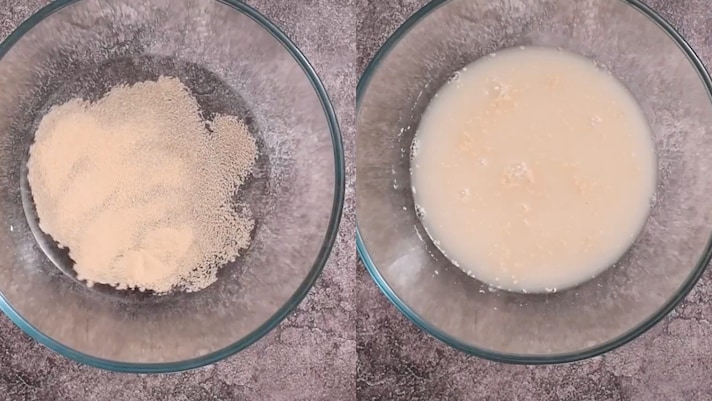
First start by dissolving fresh yeast in warm water.
First start by dissolving fresh yeast in warm water.
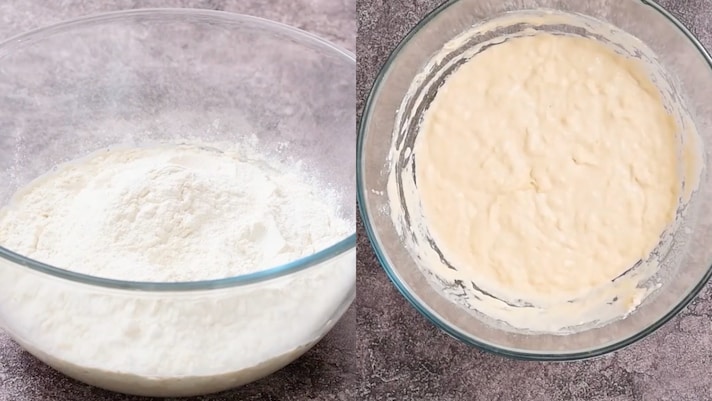
Stir in the flour until smooth, cover, and let rise.
Stir in the flour until smooth, cover, and let rise.
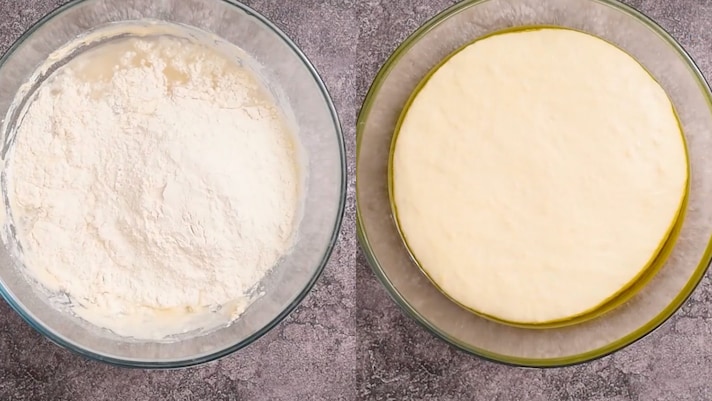
Add the remaining flour, water, salt, and mix with a wooden spoon until a sticky, shaggy dough forms. Transfer to a lightly greased surface and fold the dough gently a few times. Cover and let rise for about 2 hours.
Add the remaining flour, water, salt, and mix with a wooden spoon until a sticky, shaggy dough forms. Transfer to a lightly greased surface and fold the dough gently a few times. Cover and let rise for about 2 hours.
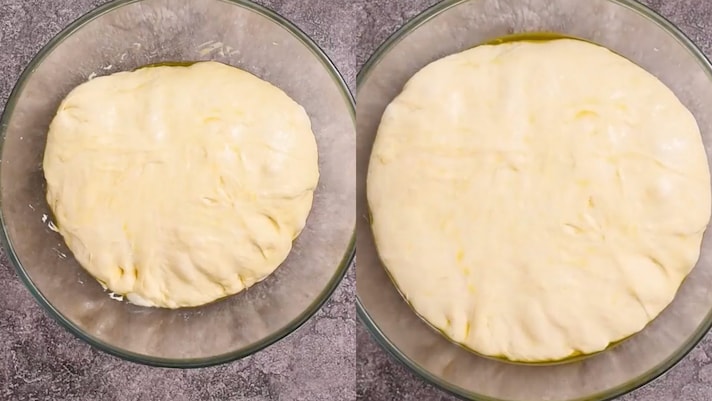
Fold the dough once more to strengthen the gluten, then let it rest for 1 more hour.
Fold the dough once more to strengthen the gluten, then let it rest for 1 more hour.
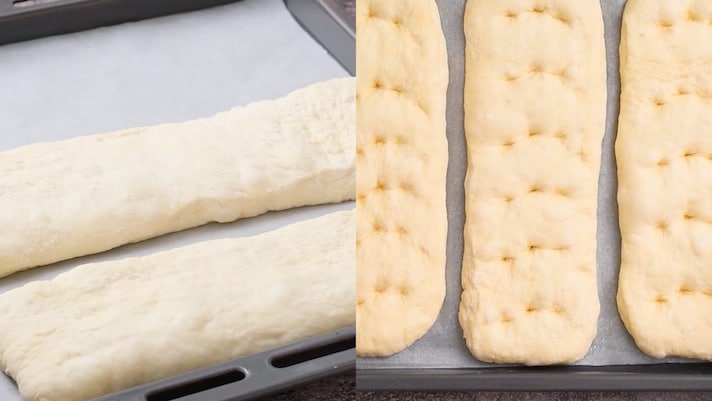
Divide the dough into 3 equal portions. Place on a baking sheet lined with parchment paper and gently press each piece with your fingertips.
Divide the dough into 3 equal portions. Place on a baking sheet lined with parchment paper and gently press each piece with your fingertips.
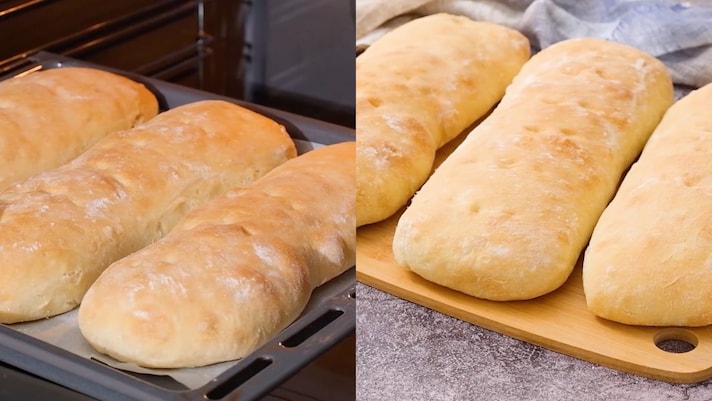
Place in the preheated oven for 5 minutes at 270°C (520°F) on the lower shelf, then 10 minutes at 220°C (430°F) on the middle shelf.
Place in the preheated oven for 5 minutes at 270°C (520°F) on the lower shelf, then 10 minutes at 220°C (430°F) on the middle shelf.

;Resize,width=767;)
